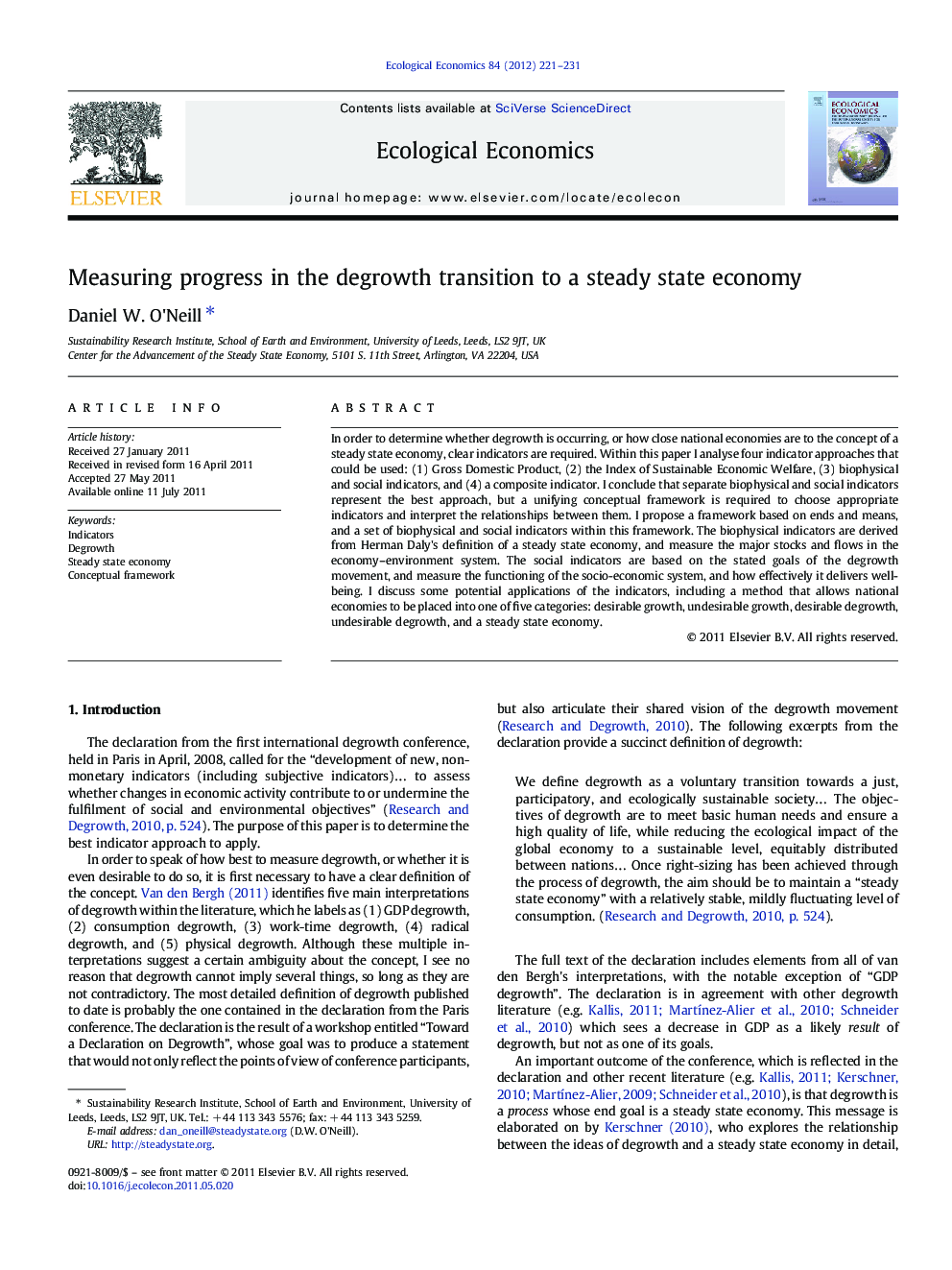| کد مقاله | کد نشریه | سال انتشار | مقاله انگلیسی | نسخه تمام متن |
|---|---|---|---|---|
| 5050066 | 1476395 | 2012 | 11 صفحه PDF | دانلود رایگان |

In order to determine whether degrowth is occurring, or how close national economies are to the concept of a steady state economy, clear indicators are required. Within this paper I analyse four indicator approaches that could be used: (1) Gross Domestic Product, (2) the Index of Sustainable Economic Welfare, (3) biophysical and social indicators, and (4) a composite indicator. I conclude that separate biophysical and social indicators represent the best approach, but a unifying conceptual framework is required to choose appropriate indicators and interpret the relationships between them. I propose a framework based on ends and means, and a set of biophysical and social indicators within this framework. The biophysical indicators are derived from Herman Daly's definition of a steady state economy, and measure the major stocks and flows in the economy-environment system. The social indicators are based on the stated goals of the degrowth movement, and measure the functioning of the socio-economic system, and how effectively it delivers well-being. I discuss some potential applications of the indicators, including a method that allows national economies to be placed into one of five categories: desirable growth, undesirable growth, desirable degrowth, undesirable degrowth, and a steady state economy.
Research Highlights⺠I analyse four indicator approaches to measure degrowth to a steady state economy. ⺠Separate biophysical and social indicators are the best approach. ⺠I propose a unifying conceptual framework for indicators based on ends and means. ⺠I suggest indicators based on the definition of a SSE and goals of degrowth. ⺠The indicators allow national economies to be placed into one of five categories.
Journal: Ecological Economics - Volume 84, December 2012, Pages 221-231